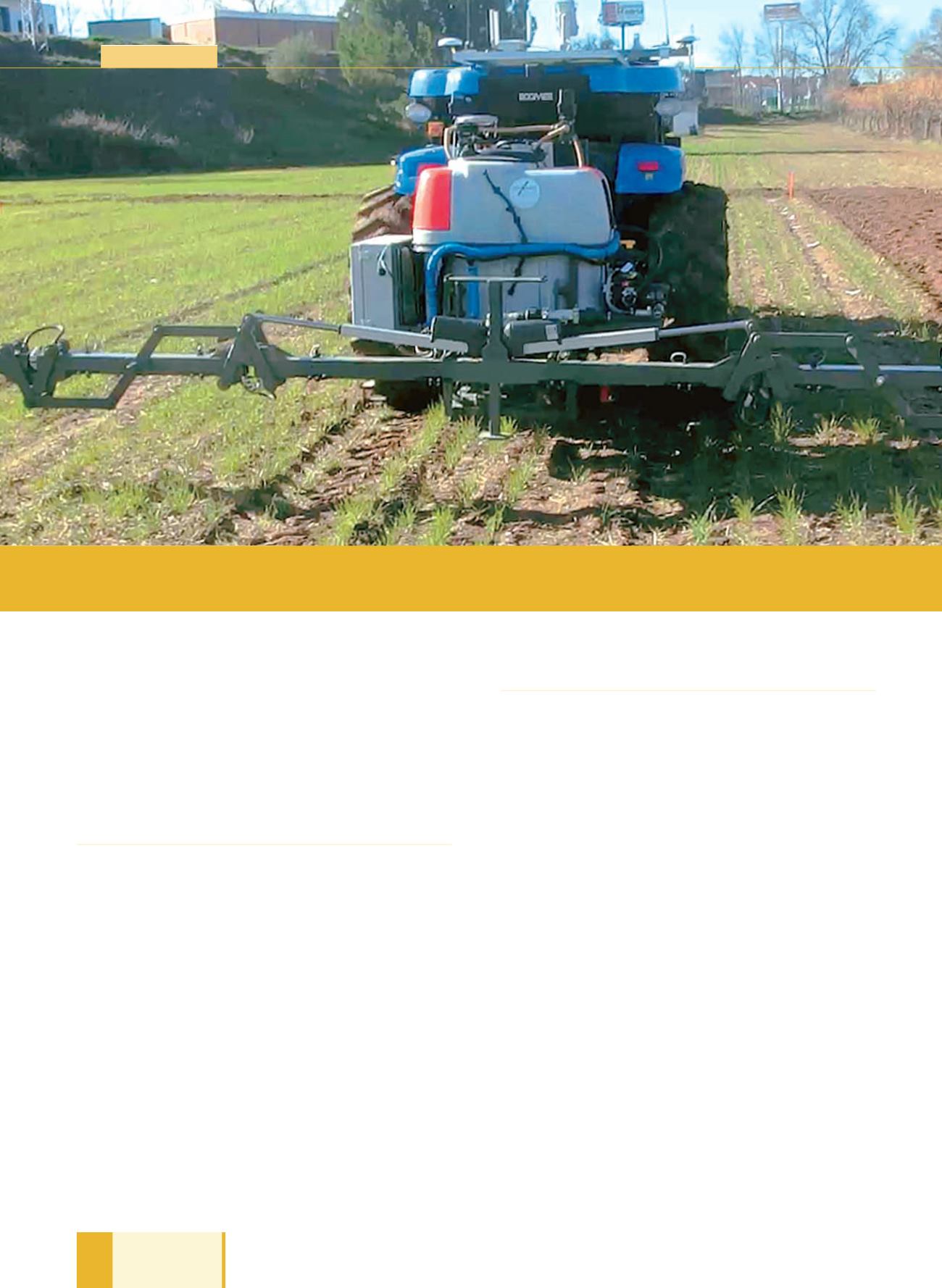
di Andrea Peruzzi - Centro di Ricerche Agro-Ambientali “Enrico
Avanzi”, Universitàdi Pisa
eMarcoVieri - Unitàdi Ricerca Ingegneriadei Biosistemi Scuoladi
Agraria, Universitàdi Firenze
N
egli ultimi anni si stannosemprepiùdiffondendoesvi-
luppandonuove tecnologie cheaiutanoagestire inma-
niera precisa sia le superfici agricole che quelle fore-
stali. Queste innovazioni vengono normalmente incluse al-
l’interno del concetto più ampio di “Agricoltura di Precisio-
ne”, che consistenellagestioneagronomicadifferenziatadel
terreno considerandone la variabilità spaziale. Inoltre l’im-
piegodi sistemi autonomi (robot) costituisceunulteriorepas-
so avanti nell’ambito di questa tendenza ad una automatiz-
zazione dell’agricoltura, per cui è ipotizzabile prevedere che
inunprossimo futuronel settoredellameccanizzazioneagri-
cola si assisterà a una vera e propria rivoluzione, supporta-
tadamacchinedi questo tipo. Inquesto contesto,dal 2010
al 2014, è stato realizzato un progetto di ricerca denomina-
to RHEA (Robot Fleets for Higly Effective Agriculture and Fo-
restryManagement), finanziato nell’ambito del Settimo Pro-
grammaQuadrodell’UE. Il progettoè stato caratterizzatoda
un rilevante carattere multidisciplinare e ha incluso com-
plessivamente15diversi partner europei, trauniversità, cen-
tri di ricerca, societàspin-off editteprivate, inmododa coin-
volgere diverse tipologie di competenze tecniche, ingegneri-
AndreaPeruzzi -EnricoAvanziAgro-EnvironmentalResearchCenter,
UniversityofPisa
andMarcoVieri - Biosystems EngineeringResearchUnit –Agrarian
School, Universityof Florence
N
ew technologies have been developed and are becoming in-
creasinglywidespread in recent years forassisting theprecise
management of agricultural and forestry lands.These innova-
tionsarenormally included in thebroader concept of“PrecisionAgri-
culture”which consistsof thedifferentiatedmanagement of agricul-
tural landby considering spacial variability.Moreover, theuseof au-
tomated systems, that is, robots,mark a further step ahead for this
trendof automationof agriculture. For this trend it is feasible topre-
dict for thenear future thatagriculturalmechanizationwill assist ina
very real revolution backed bymachines of this type. In this setting,
theRHEAResearchProject (Robot Fleets forHighlyEffectiveAgricul-
tureandForestryManagement)waspursued from2010 to2014with
fundingby theEuropeanUnion7thFrameworkProgram.Theproject
featuredamultidisciplinary approachwhich, overall, brought togeth-
er fifteen European partnerswhich included universities, research
centers, spin-off companiesandprivate firms involving various types
of technical, engineering and agronomic skills in the fields of robot-
ics, IT, agrarianmechanics,weed science and telecommunications.
Theobjectivewas todesign,createand testanautomaticand robotic
site-specific system for control of infestationsof herbaceous species
forperformingplant treatmentoperationson treeand forest species.
This important goal was pursuedwith a fleet of robotsmade up of
groundandaerialunitsworking inclosecontactwitheachother.Each
unit was equippedwith a system for acquisition and actuation and
wasable tooperate in threedifferent scenarios: chemical control on
wheat infestationsandphysical control,mechanical and thermal,on
maizeand for plant treatment of olivegroves.
The role and achievements of Italian agrarianmechanics
Anautomatedmachine for the site-specific control of infestations
92
MW
n. 11/2015
T
ECNICA
ProgettoRhea
,una flottadi robotper l’
agricoltura
Sistemi per lagestioneelettronicadegli interventi sulle
colturesonostati sviluppati inun importanteprogetto
europeo, finanziatonell’ambitodel settimoProgramma
Quadroper laRicerca.Alcune tecnologiesviluppateda
università italianesonostateattentamentevagliatee
approvatedallacommissionedi valutazione istituita
dall’UnioneEuropea


